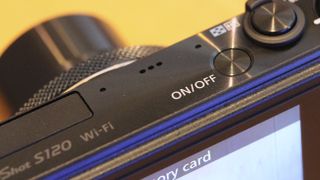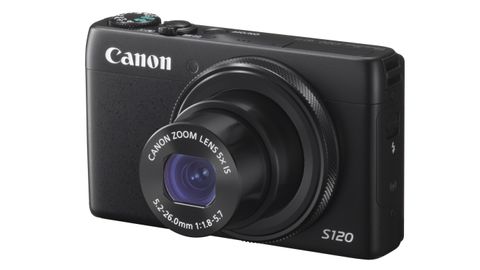Why you can trust TechRadar
Over the years, the Canon S range has gained a reputation as an excellent performer, especially for its size and weight. The S120 builds on that excellent lineage, producing great images straight from the camera as we've come to expect.
Colours are natural and well saturated, without being overly vibrant. Skin tones are particularly pleasing, while you have the option to boost colours if you wish by using the MyColors option from the function menu – although bear in mind these can only be used when not shooting in raw format.
The S120's new back-illuminated 12.1 million-pixel sensor is a significant upgrade from the S110, especially in terms of low light performance. Shooting images at up to ISO 3200 results in usable images, especially if printing or sharing at normal to small sizes. Although image smoothing is present pretty much throughout the sensitivity range, even at ISO 1600 this isn't too bad, and there's still an impressive amount of detail kept. Straying into ISO 3200 is fine if you need it, but you might want to avoid if it if you want ultra-sharp images.

This improved low light performance comes as a result of the addition of the latest Digic 6 processor, which also facilitates high continuous shooting rates of 9.4fps, which is extremely useful for shooting fast moving action. That processor also means that buffering time is very quick, meaning you can keep shooting until your memory card runs out.
By shooting at mid-range apertures, such as f/8.0, we can assess the sharpness of the S120's lens. The optic is capable of delivering sharp images right the way across the frame, leading to pleasing results, especially when shooting in good light.
Focusing is generally pretty snappy and quick, although this does drop a little in low light, but not enough to be too much an annoyance. Macro focusing is also pretty impressive, allowing you to get very close to the subject to produce detail rich frame-filling close-ups.
Leaving a lot of the decision making up to the S120 is fine, with good performance put in by the automatic white balance and general-purpose metering, even when shooting in artificial or high contrast lighting conditions.
Useful zoom
Although the S120 doesn't have a particularly long zoom range, it should be adequate for most every day scenarios. Shooting at the far end of the telephoto zoom lens results in images which are sharp, although there is some degree of image smoothing if you examine at 100%. You can also activate digital zoom if you need extra reach. This is also good if you're sharing at normal or small sizes, but if you examine at actual size, there is a fair amount of detail lost. As you can't use digital zoom when shooting in raw format, you could also crop into the image in post production if you need to keep a raw file.
Canon isn't particularly known for its range of digital filters, but there are some to experiment with on the S120, found under a dedicated mode. Our particular favourites are toy camera and nostalgic, but this will likely be down to personal preference. It's a shame that you can't use the filters while shooting in raw format mode though, as you'll be stuck with any filter you choose to use. Similarly, you can also get a little creative with "MyColors" which basically recreates classic film types, such as Positive Film or monochrome. Although again fun to use, you can't use them when shooting raw format, though at least with these you do keep creative control over parameters such as aperture.
The touchscreen is one of the best features about the S120, being very responsive to the touch. It also doesn't suffer too badly from glare or reflection, though with a fixed screen and no viewfinder you may struggle in extremely bright sunlight.
Amy has been writing about cameras, photography and associated tech since 2009. Amy was once part of the photography testing team for Future Publishing working across TechRadar, Digital Camera, PhotoPlus, N Photo and Photography Week. For her photography, she has won awards and has been exhibited. She often partakes in unusual projects - including one intense year where she used a different camera every single day. Amy is currently the Features Editor at Amateur Photographer magazine, and in her increasingly little spare time works across a number of high-profile publications including Wired, Stuff, Digital Camera World, Expert Reviews, and just a little off-tangent, PetsRadar.


